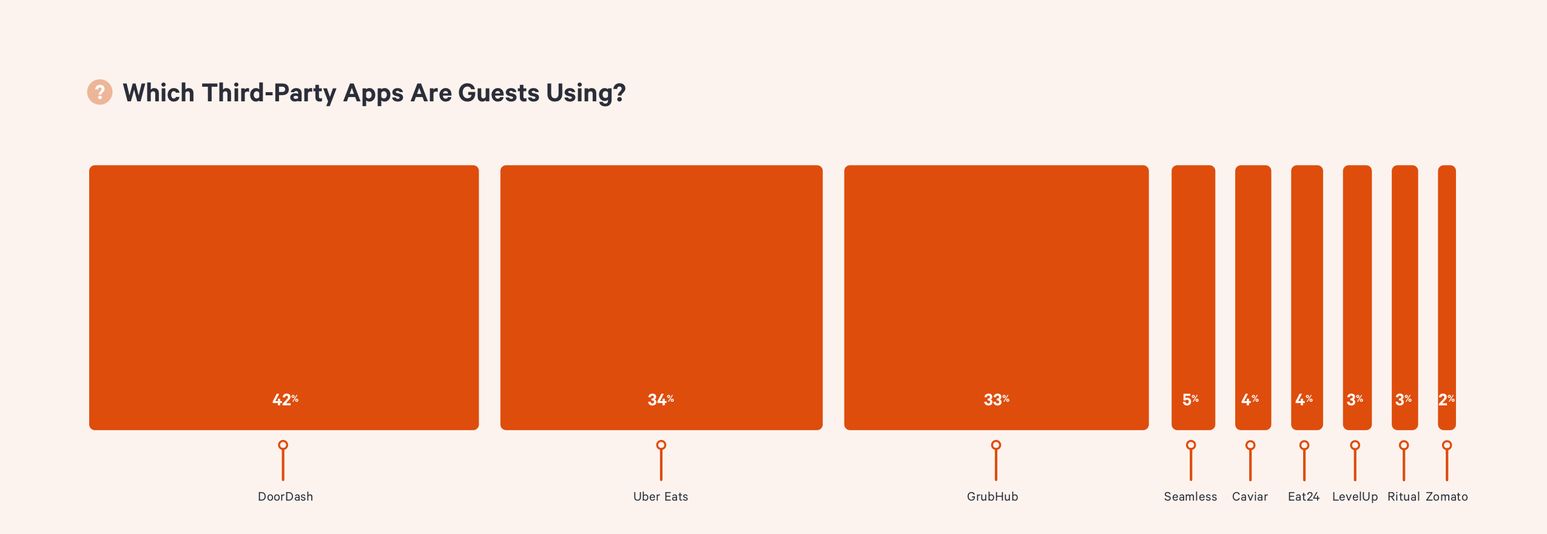When the coronavirus pandemic hit, many Americans went from eating at restaurants to ordering meals on their phones. A new survey reveals which delivery app they have been using.
Toast, whose software helps restaurants do everything from take orders to print bills, surveyed 707 U.S. adults in early June. During the previous month, all of them had either ordered delivery or takeout, or eaten at a restaurant.
Of those surveyed, only 14 percent said they had not ordered food online. Not that picking up the phone is completely outdated. It also found that 52 percent of customers had called a restaurant to make an order.
Nearly half (46 percent) of those using third-party delivery apps used DoorDash (including DoorDash-owned Caviar). The next most popular app was Uber Eats at 34 percent, followed by Grubhub at 33 percent.

Image: toast
Sixty-four percent of respondents said they used a delivery app at some point over the month. Thirty-six percent said they used them a few times. Only 4 percent said they used them multiple times a day.

Image: toast

Image: toast
“Personal behavior has changed so dramatically” since the pandemic began, said Kelly Esten, the VP of marketing at Toast.
For restaurants, she said owners and managers “have had to pivot to serving guests in different ways.” She noted almost half of Toast restaurant-partners didn’t have an online delivery presence before the outbreak.
Now delivery and takeout are the main ways customers can support and eat at their local businesses. Toast’s data shows people stopped eating at restaurants when the pandemic hit. Not surprisingly, that’s exactly when takeout and delivery took off.

The apps have been a lifeline for restaurants, but they’re not without drawbacks. They take huge delivery fees from restaurants, usually about 25 percent of orders.
Delivery apps were being used more often and gaining users before COVID-19. That shouldn’t stop anytime soon.
“Some of this behavior will have to stay with us forever,” Esten predicted. “It’s not going to flip right back.”
